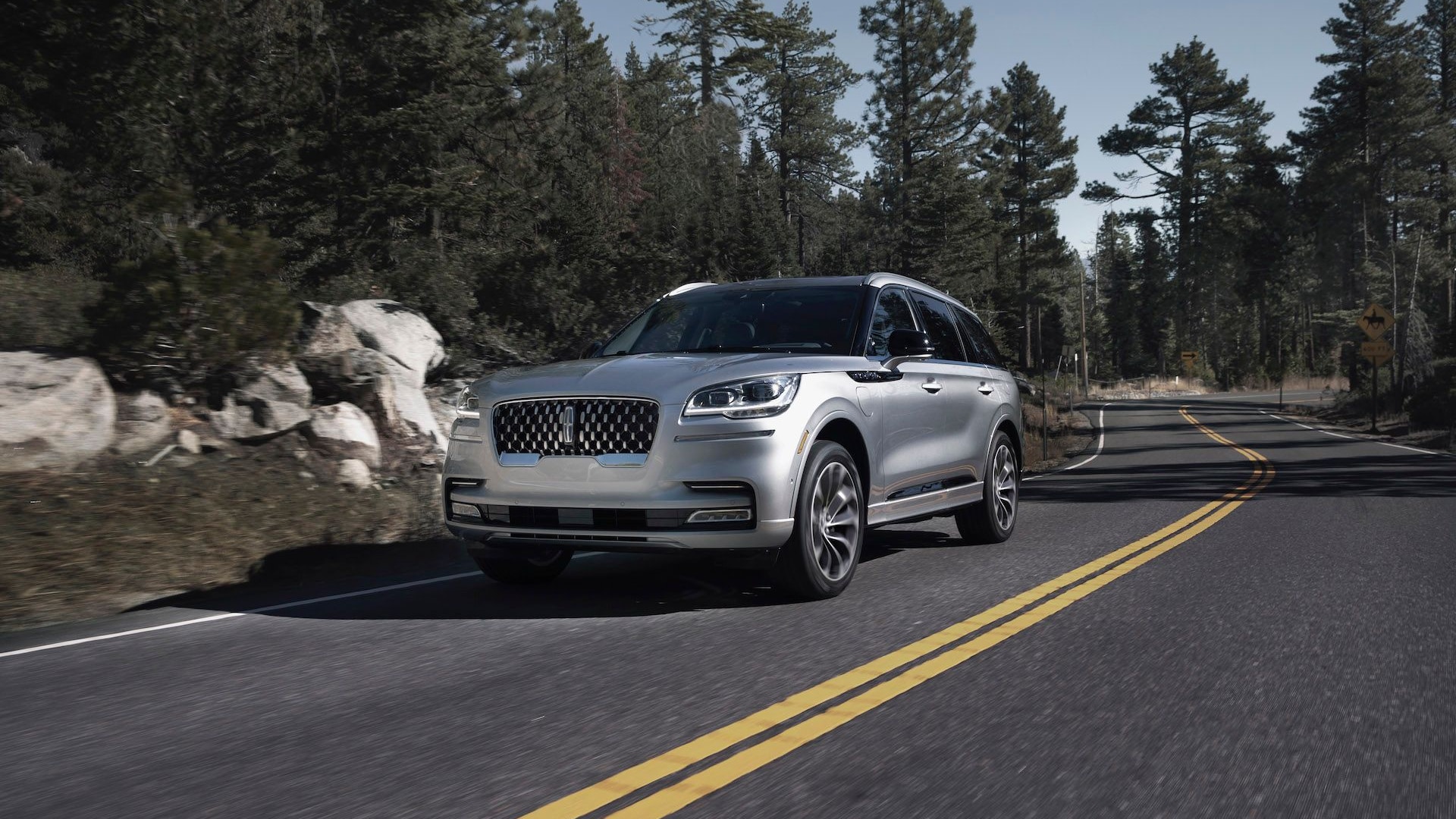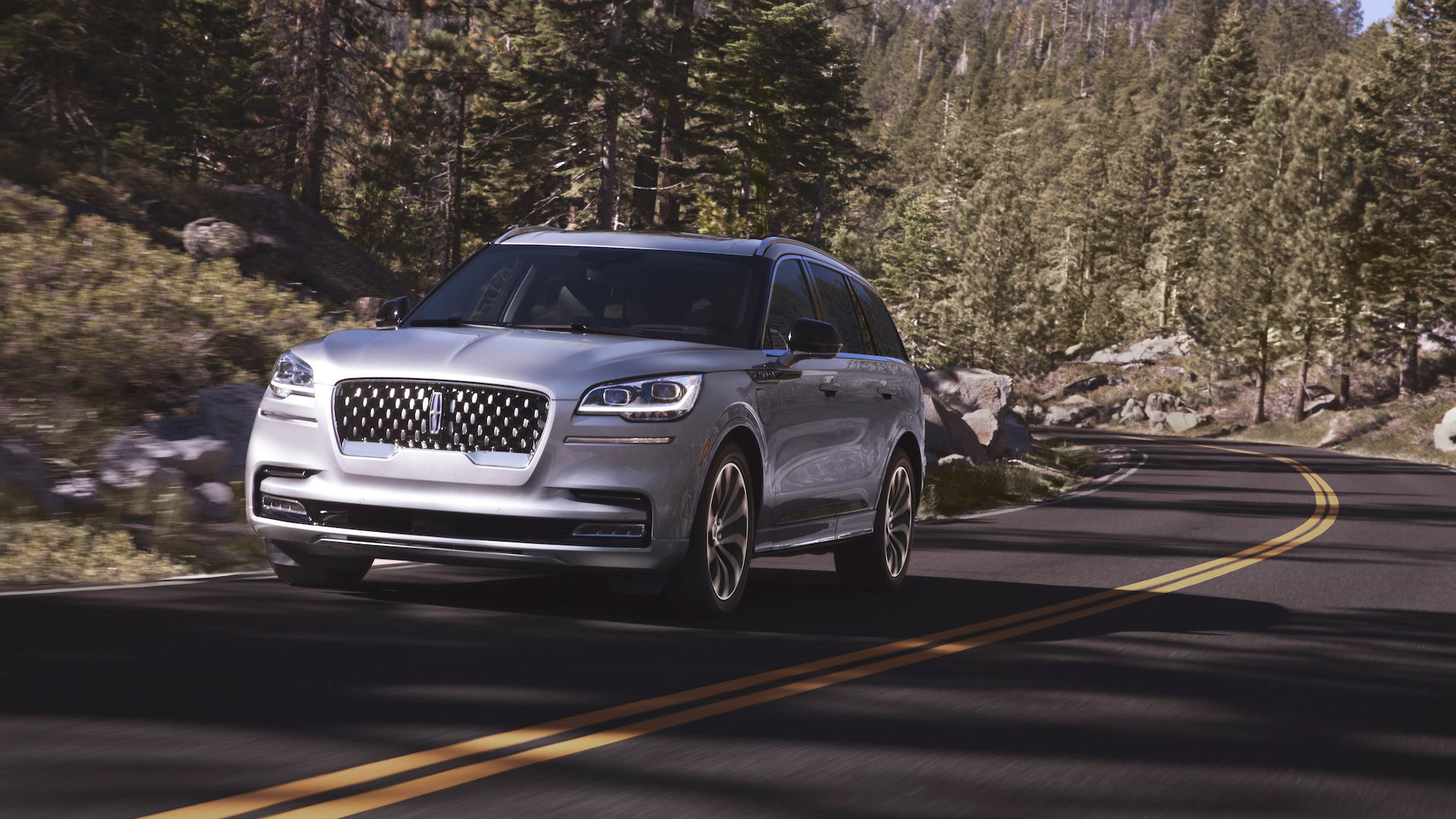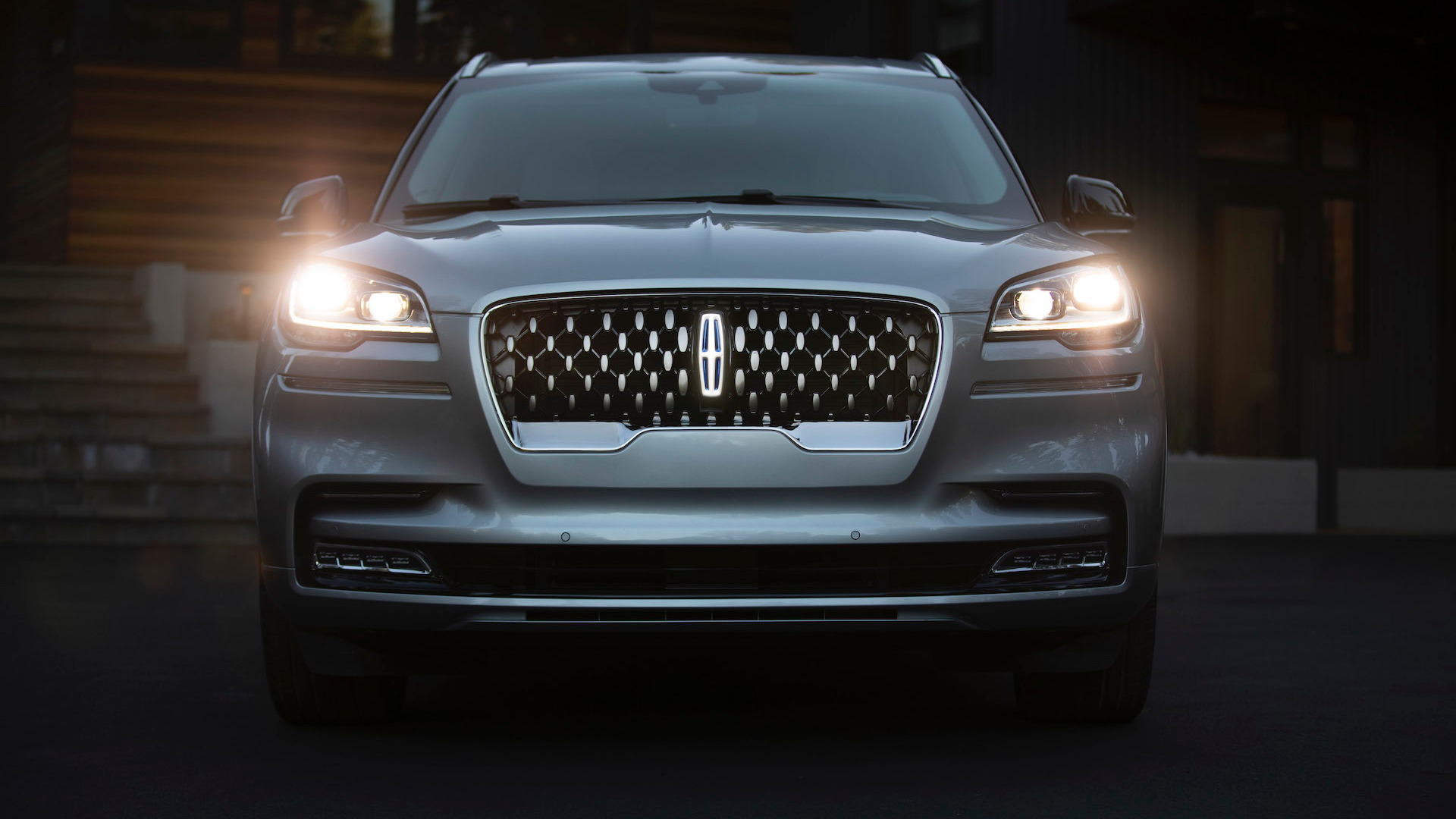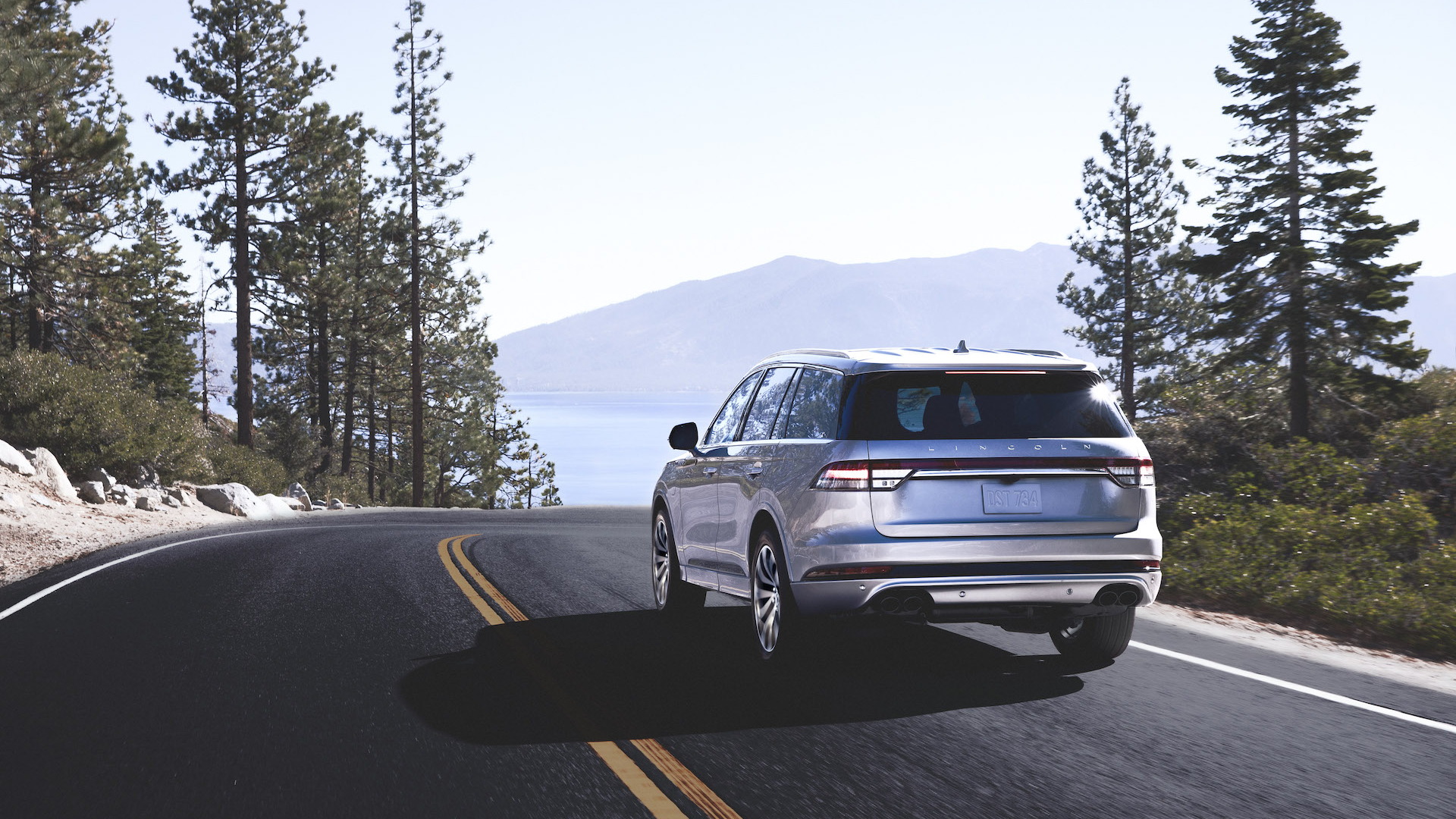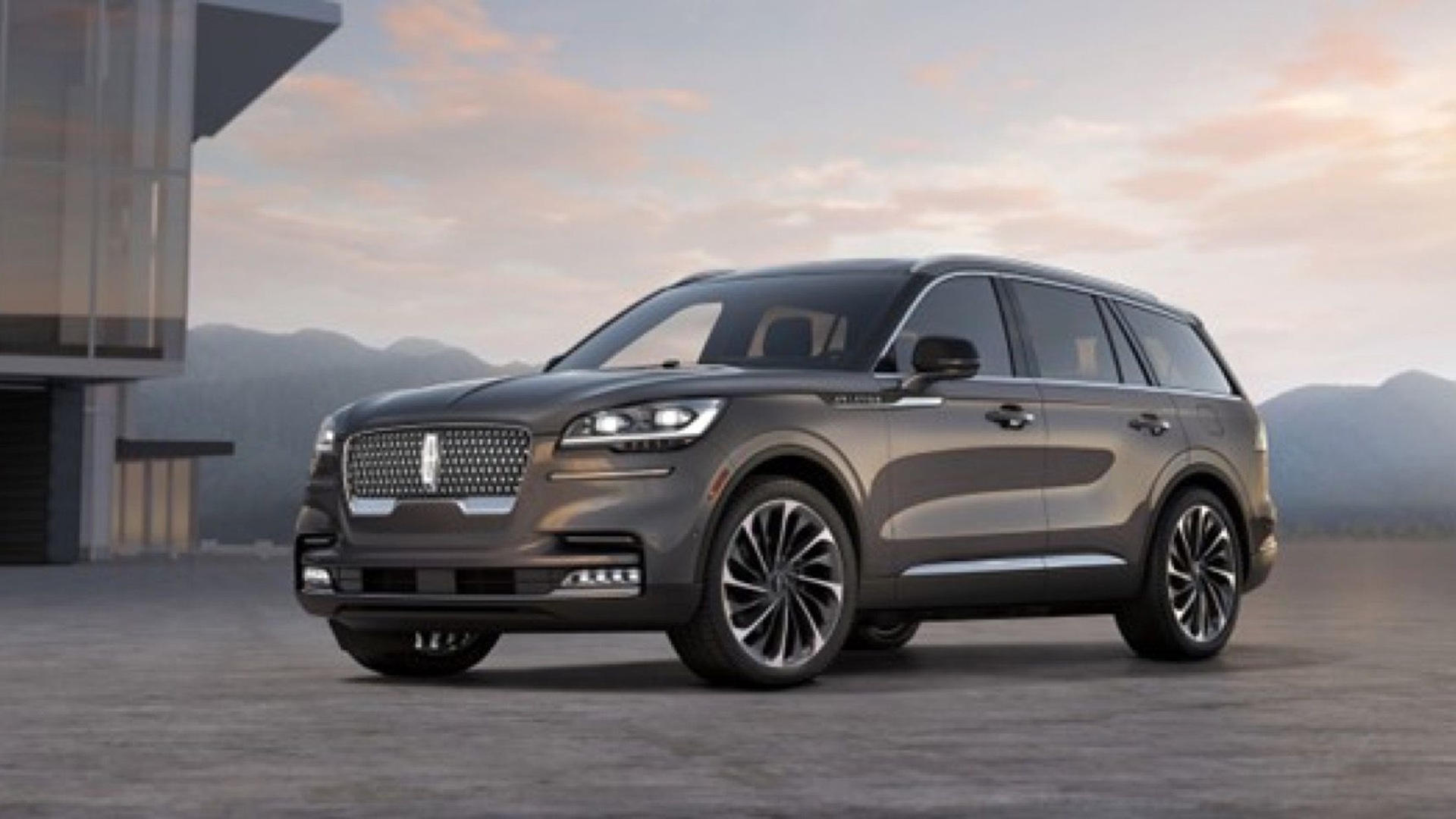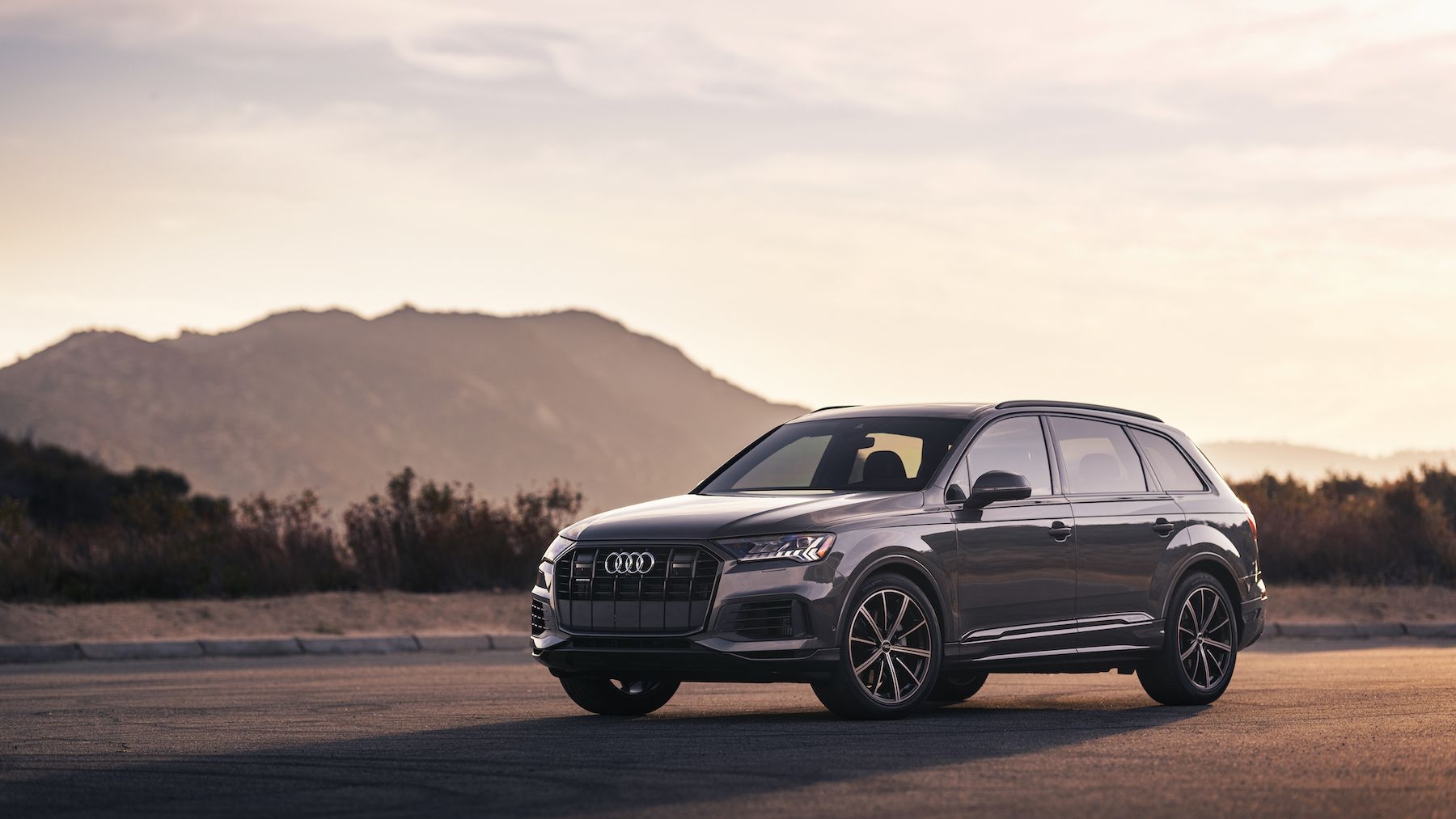The Navigator fired a clear warning shot in the direction of Cadillac’s Escalade. Now with the 2020 Aviator, Lincoln’s taking down the Caddy XT6 before that luxury SUV can find any blue sky of its own.
Both the Aviator and XT6 are three-row luxury SUVs that share some bits with other vehicles in the family, but rise above their kin in specific ways. Both have stiff entry prices, blingy trim by the foot, a plethora of touch-sensitive techno goodies. The Aviator’s stronger in just about every way—so strong, we give it 7.0 out of 10 in The Car Connection’s full review.
The Aviator throws down trump cards with just about every deal. It’s up on the XT6 by some 90 horsepower, has a more technologically capable suspension, an interior that practically scolds that in the Cadillac—it’s that good—and a plug-in hybrid model that doesn’t really do much except steal mindshare, a nonzero part of today’s luxury-SUV equation.
The Aviator’s that good. It’s not perfect.
2020 Lincoln Aviator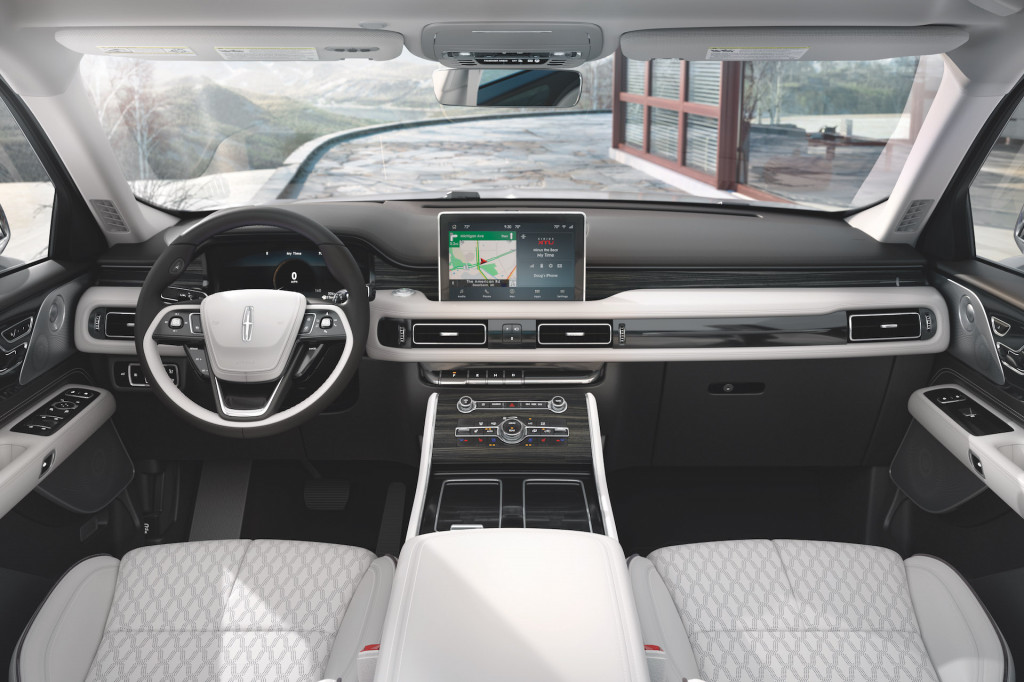
2020 Aviator design: Chalet, you stay
The Aviator wears its strongest suit. With crisp lines hemmed in by dashing dashes of bright metal, the 2020 Aviator plays with the Navigator’s luxury bona fides on its shorter, lower body.
The Aviator looks like a love letter to the ‘60s, with its high front end, massive mesh grille, and the flourishes of chrome and jewelry that stand in for big cufflinks and wide lapels. The Lincoln star lights up in LED sync with LED headlights underscored with more LEDs, in case you like LEDs. The headlights themselves have an eye-catching jog in their shape, an old Ian Callum trick applied to Jaguars of the last generation. The fender vents create shelves for the side mirrors. The massive drape of the roofline ends with a subtle arrangement of horizontal bands and lights that counteracts all the bougie bits up front.
Inside the Aviator settles into a swank rectangular motif: in the air vents that stud a band that gives the dash a real spine, in the shape of the seatbacks that can be embroidered with lovely quilting, in the ratio of the 10.1-inch touchscreen that stands at attention on the dash. It’s a neat feat to fashion a modern look from throwback cues; where the Aviator does it best is in its Black Label trims, which pair black and tan in a Flight combination, or wood and red leather in a Destination duo—or in the sybaritic silver-wood and white-leather look called Chalet; you stay.
The XT6 looks forlorn by comparison; the Benz GLE and Kia Telluride look concerned.
2020 Lincoln Aviator
2020 Aviator performance: twin turbos and road-sensing cameras
The 2020 Aviator picks up where past versions left off. It’s a platform-mate with the new Ford Explorer, though its suspension and powertrain differ considerably. The Aviator gets a twin-turbo V-6 also found in the Explorer; here the 3.0-liter unit’s rated at 400 horsepower and 415 pound-feet of torque, good if not eye-flattening power for a vehicle that weighs 4,774 pounds at a minimum. The V-6 moans at full bore, but rattles off excellent low-end power through the 10-speed automatic that gets fidgety in the Mustang but feels very well tuned here, though the Aviator’s plastic shift paddles register as an afterthought, with no cool-metal touch to invite the senses. Lincoln offers no 0-60 mph estimates, so we’ll give you ours: 7.0 seconds.
Fuel economy hits 21 mpg combined with rear-wheel-drive Aviators and 20 mpg combined in all-wheel-drive models. The all-wheel-drive setup is a simple one that pinballs power front to rear when tires slip. With a tow package, the Aviator can pull up to 6,700 pounds.
As for handling, the Aviator can be rigged with big 22-inch wheels and with adaptive dampers, air springs, adaptive steering, and a camera that predicts road surfaces to help the suspension cope with nerve-wracking bumps. We only had access to Aviators configured this way, and now we wish we’d had a simpler one to try. The basic tune in similar Ford Explorers left no question that the shift to rear-wheel drive and the ensuing suspension design work made an enormous leap for the Ford; in the Aviator, the electronica generate a laudably smooth ride and lovely behavior in wide sweeping turns, but go wobbly in the tightest kinks we could find in Napa wine country.
Dialed through the Aviator’s extravagantly named drive modes—there’s Conserve for economy mode, Excite for sporty driving and…Normal—the Aviator’s air springs lowered the vehicle as speeds rose, the dampers tightened up in concert with the steering, and all felt sharp until the road went into a series of undulating 45-degree turns. There, the Aviator’s heft and its particular combination of big wheels and electro-pneumo add-ons got their signals scrambled, setting up a diagonal pitching motion while still delivering small impacts into the cabin, constantly modulating its responses. When the road opened up again, the Aviator relaxed back into a casual, affable ride. Who drives a $75,000 luxury SUV quickly down tight two-lane country roads, anyway, you ask? Cayenne and X5 drivers, if that’s important.
2020 Lincoln Aviator
2020 Aviator comfort, safety, and features: A business-class cabin
The 2020 Aviator surrounds the five adults who sit in rows one and two in dapper design and in excellent space. Lincoln fits basic 10-way power front seats with synthetic leather in the base Aviator, but everything else ratchets up into real leather and in many more ways of adjustability. We spent the day in the cosseting 30-way seats that come in the most expensive Lincolns; they’re like a dentist’s chair without all the painful side items, in the way they support every point of the body they touch. The center console between them has sliding covers for cupholders and hidden USB-enabled bins, and the panoramic sunroof only nibbles a bit of head room. Some of the metallic trim’s underpinned by plastic, but is there actually a problem tier above First World?
In row two, a three-person bench sits somewhere on a configurator; most Aviators will come with square-backed captain’s chairs that look like mid-century furniture and feel better than the sculpted pieces in rivals; more surface area means more support. Some versions even get heating and cooling to go with ample knee and head room. Row three doesn’t offer much in the way of any space for adults; it’s tiny, with low cushions and no support under the legs. But it power-folds down to expand the Aviator’s 18.3 cubic feet of space behind row three to 41.8 cubic feet behind row two—or 77.7 cubic feet behind row one.
On the safety front, even the base $52,195 Aviator comes with automatic emergency braking; a surround-view camera system, a head-up display, and adaptive cruise are offered. Base vehicles also get a power tailgate, remote start, keyless ignition, and a 10-speaker audio system. They also get a 10.1-inch screen for infotainment and digital gauge cluster, both of which look fine if not as lushly designed as the rest of the cabin—and they get a voice-command button baked into the steering wheel like the single raisin that’s found its way, unwelcome, in a perfect chocolate-chip cookie. The Aviator’s new joystick controls, also baked into the steering wheel, get a more resounding welcome cheer.
The $57,285 Aviator Reserve gets 20-inch wheels, 14-speaker Revel sound, a surround-view camera system, and premium leather. Why stop there? Lincoln’s $78,780 Aviator Black Label has wireless smartphone charging, sensationally crisp and clean 28-speaker Revel audio, heated and cooled front and second-row seats, 21-inch wheels, the dynamic handling package, the ability to use your smartphone as a key, and your choice of those fabulous interior themes. With all that, and a plug-in hybrid model in the offing, the 2020 Lincoln Aviator sets Ford’s luxury-SUV ambitions on a soaring flight path.
Lincoln provided travel and lodging to Internet Brands Automotive to bring you this firsthand review.

